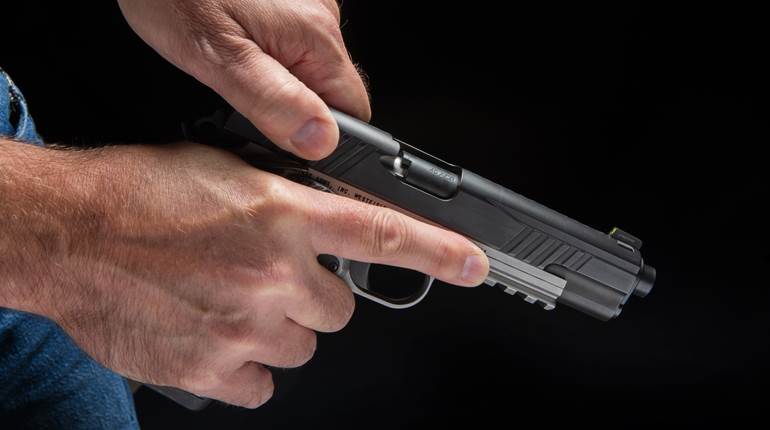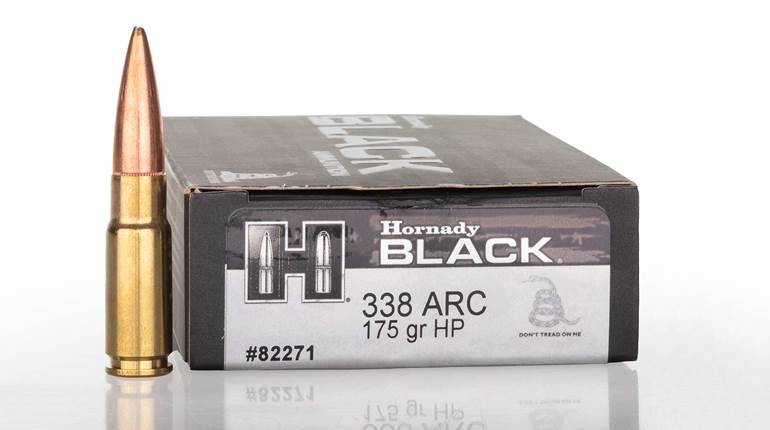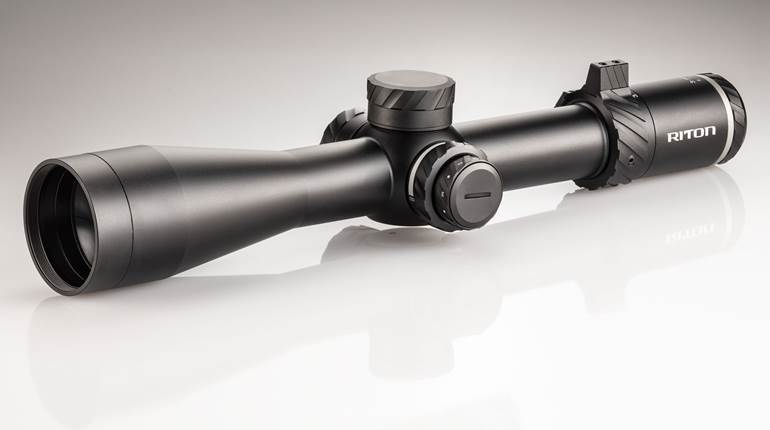
 These days, you’re lucky to find 5.56 NATO and its commercial counterpart, .223 Rem., at all—let alone a load built for a specific purpose. I developed this one for my 20"-barreled Rock River Arms NM A2 rifle and found it to work well in faster-twist barrels. On bad days, it groups just outside one minute of angle, and on good days—out of my Anderson Mfg. 24" Sniper upper—it produces ragged holes at 100 yards. Using a Hornady 75-grain BTHP bullet, it is affordable enough for plinking, accurate enough for competition and deadly on coyotes. Of course, primers and firearms will affect performance, so always start at the published minimum and work your way up.
These days, you’re lucky to find 5.56 NATO and its commercial counterpart, .223 Rem., at all—let alone a load built for a specific purpose. I developed this one for my 20"-barreled Rock River Arms NM A2 rifle and found it to work well in faster-twist barrels. On bad days, it groups just outside one minute of angle, and on good days—out of my Anderson Mfg. 24" Sniper upper—it produces ragged holes at 100 yards. Using a Hornady 75-grain BTHP bullet, it is affordable enough for plinking, accurate enough for competition and deadly on coyotes. Of course, primers and firearms will affect performance, so always start at the published minimum and work your way up.
My recipe starts with carefully weighed and processed Lake City brass. After a full match prep, I separate out the cases that weigh between 92 and 93 grains and prime them with CCI BR-4s. An even 23.0 grains of Hodgdon Varget just about fills the case body without needing a drop tube. When seating bullets, I found this cartridge to not be overly finicky with seating depth, but I do find my best accuracy when I seat as long as possible, up to 2.265" for good metal magazines. Lake City brass has excellent neck tension, so skip the crimp unless you find that the bullet won’t stay put during feeding or recoil.
This load leaves a 20" barrel at 2,511 f.p.s. (1,050 ft.-lbs. of energy) with an extreme spread of 43 f.p.s. and a standard deviation of just 16. Best of all, it falls into the range of both 5.56 NATO and .223 Rem., as per the 10th edition of Hornady’s reloading manual, making it safe for both chambers as well as the .223 Wylde.
—Frank Melloni

















![Winchester Comm[94]](/media/1mleusmd/winchester-comm-94.jpg?anchor=center&mode=crop&width=770&height=430&rnd=134090756537800000&quality=60)
![Winchester Comm[94]](/media/1mleusmd/winchester-comm-94.jpg?anchor=center&mode=crop&width=150&height=150&rnd=134090756537800000&quality=60)


















